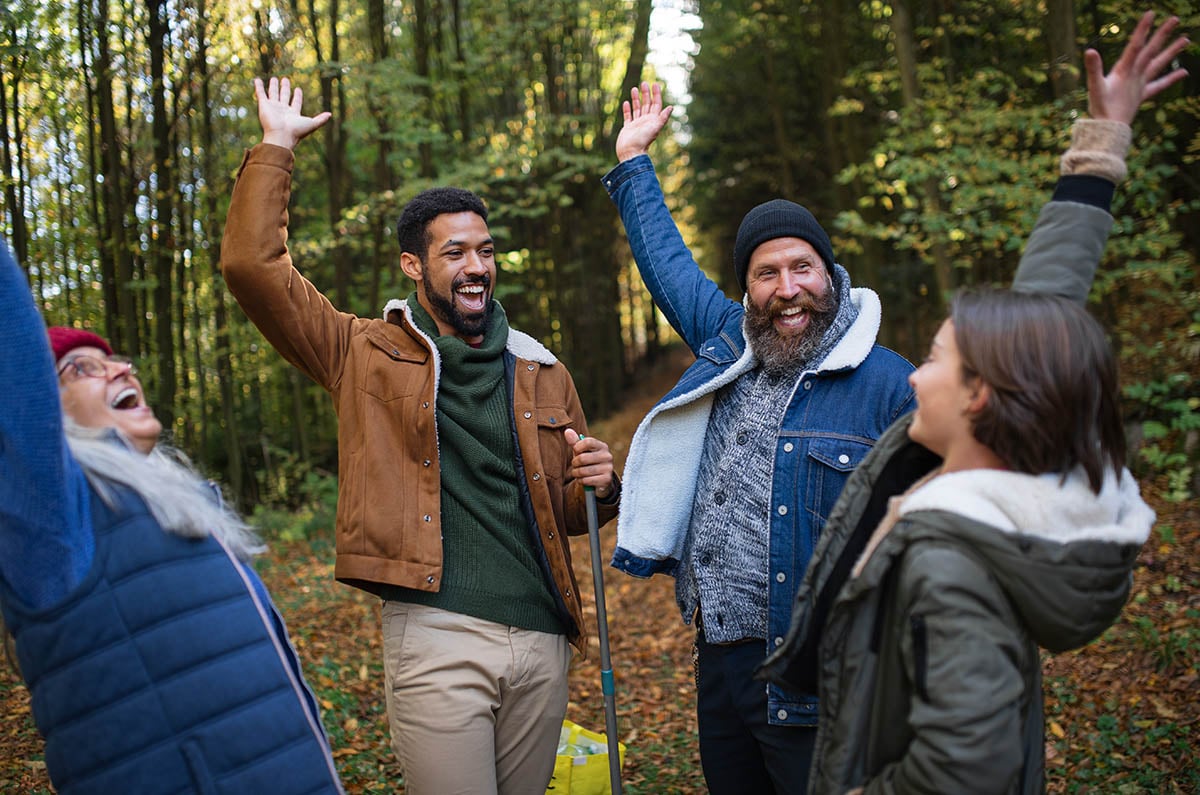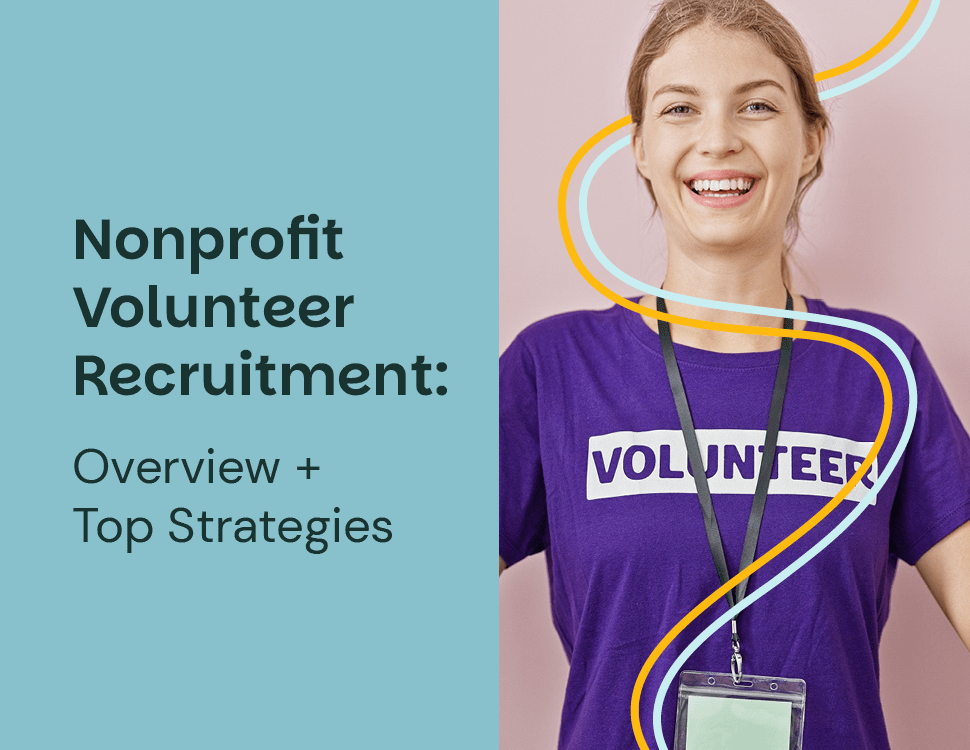Leveraging Volunteer Help at Nonprofit Events: 5 Strategies
Chances are, your nonprofit already recruits volunteers to help run your events, but have you ever thought about how you’re allocating their time?
6 min read
 Team Better Impact
Jun 28, 2023 11:51:26 AM
Team Better Impact
Jun 28, 2023 11:51:26 AM

The many moving parts of nonprofit events—from planning your event agenda and gathering auction items to coordinating with caterers and designing marketing materials—can leave your internal team feeling spread thin. To make your efforts more efficient and effective, tap into the power of volunteers!
Volunteers make it possible for your nonprofit to host important and memorable events. These enthusiastic supporters are passionate about your cause and thrive when they put their passion into action, whether they’re greeting your gala attendees at the door or assisting with decor.
In order for your organization to truly engage its volunteers, you’ll need to do more than create a sign-up sheet and a to-do list for them. You’ll also need to pay special attention to how you engage your volunteers with the event experience, from beginning to end.
Of course, you’ll need the right tools on your side, along with key knowledge of best practices for volunteer engagement. In this post, we’ll give you a leg up by covering four ways you can truly engage your volunteers with each of your nonprofit’s events. Let’s begin!

Start by fine-tuning your approach to recruiting volunteers. You should walk through your plan for the event and identify exactly what you’ll need help with. Turn those tasks into roles that your volunteers can fill based on their knowledge and expertise, and determine how many volunteers you’ll need to fill each role.
Here are some examples of event-specific roles you might find you need to fill:
Well ahead of your event, list each role on your website’s volunteer page. Include a job description for each of them, detailing the qualifications, expectations, time commitment, and training needed for individuals to serve that role.
By including this information, you can ensure that your volunteers have the chance to sign up for duties that match their skill sets and interests. For example, an individual who loves their day job as a personal assistant might be excited to sign up as your executive director’s errand runner on the day of the event. Or, someone who has a passion for IT might find the opportunity to assist with tech to be exciting.
Make it easy for volunteers to sign up for the role they’re interested in by optimizing your registration form or application. Ensure that the form is short and easy to fill out and that it appears correctly on mobile devices. If you require additional steps to be completed before the volunteer can help out, such as a background check, make sure you provide clear instructions for them to complete that step well ahead of your event.

Even the most qualified and experienced volunteers will need thorough training before your event. Often, your internal team has a specific vision for how you want the upcoming event to run. Training volunteers gives you the opportunity to get everyone on the same page and to feel more comfortable and confident in their roles. This will also help your team present itself as unified and professional during the event.
While there will likely be role-specific training that you need to conduct–especially for more complex roles like tech assistants or auction item procurement specialists–you should ensure that everyone is properly trained in the following areas:
To present your training, use what works best for your volunteer program and staff member onboarding. For example, you might host in-person or virtual training sessions that include interactive activities or short assessments after each session. However you decide to train your team of volunteers, make sure you’ve created documentation that they can review again on their own time if they have questions. Also, let them know who they can turn to for additional help. The more supported they feel, the better!

Often, donors are recognized in meaningful ways at nonprofit events. For example, their names might be unveiled on a donor wall, or top donors might receive special awards or commendations.
So, why not recognize the volunteers at your events, too? Making an effort to do so will not only help your volunteers feel seen and valued for their contributions but will also show the rest of your nonprofit’s community that you’re dedicated to making the volunteer experience next-level.
Here are some fun ideas for recognizing your volunteers during your event:
No matter what role they play, everyone who is involved in your event should leave the event feeling appreciated—especially your volunteers. On top of recognizing them during the event, make sure your team takes the time to thank volunteers for their efforts as you wrap up your take-down activities. This will set a positive tone for individual volunteers that can then lead to long-term involvement.

After an event ends, it can be tempting to move on to other projects and campaigns. After all, you’ve likely been working on (and stressing about) your event for months. But before you move on to your other pending tasks, make sure you prioritize meaningful follow-ups—not just with attendees who make donations to your organization, but with your volunteers, too!
Here are some thoughtful follow-up strategies to use with volunteers after-the-fact:
Once you’ve engaged your volunteers through your events, make sure you can retain them for future events and other volunteer opportunities! Use these strategies to help your organization build strong relationships with your volunteers that will pave the way for future engagement.
Your volunteers are an important part of your nonprofit’s world, and their hard work can empower your organization in several ways. This is why effectively engaging your volunteers before, throughout, and following your event is so critical.
To take your volunteer engagement efforts to new heights, you might find it useful to work with event experts. The right charity event planning and production team can take care of the heavy lifting for you so that your team can focus on the important work of actively engaging your supporters and volunteers. You’ve got this!
Featured Posts

Chances are, your nonprofit already recruits volunteers to help run your events, but have you ever thought about how you’re allocating their time?

Volunteers are the lifeblood of nonprofits, offering their time, skills, and passion to drive missions forward. However, attracting (and retaining)...
.png)
Volunteers are the lifeblood of many nonprofit organizations. By dedicating their time, energy, and skills, these individuals help nonprofits fulfill...